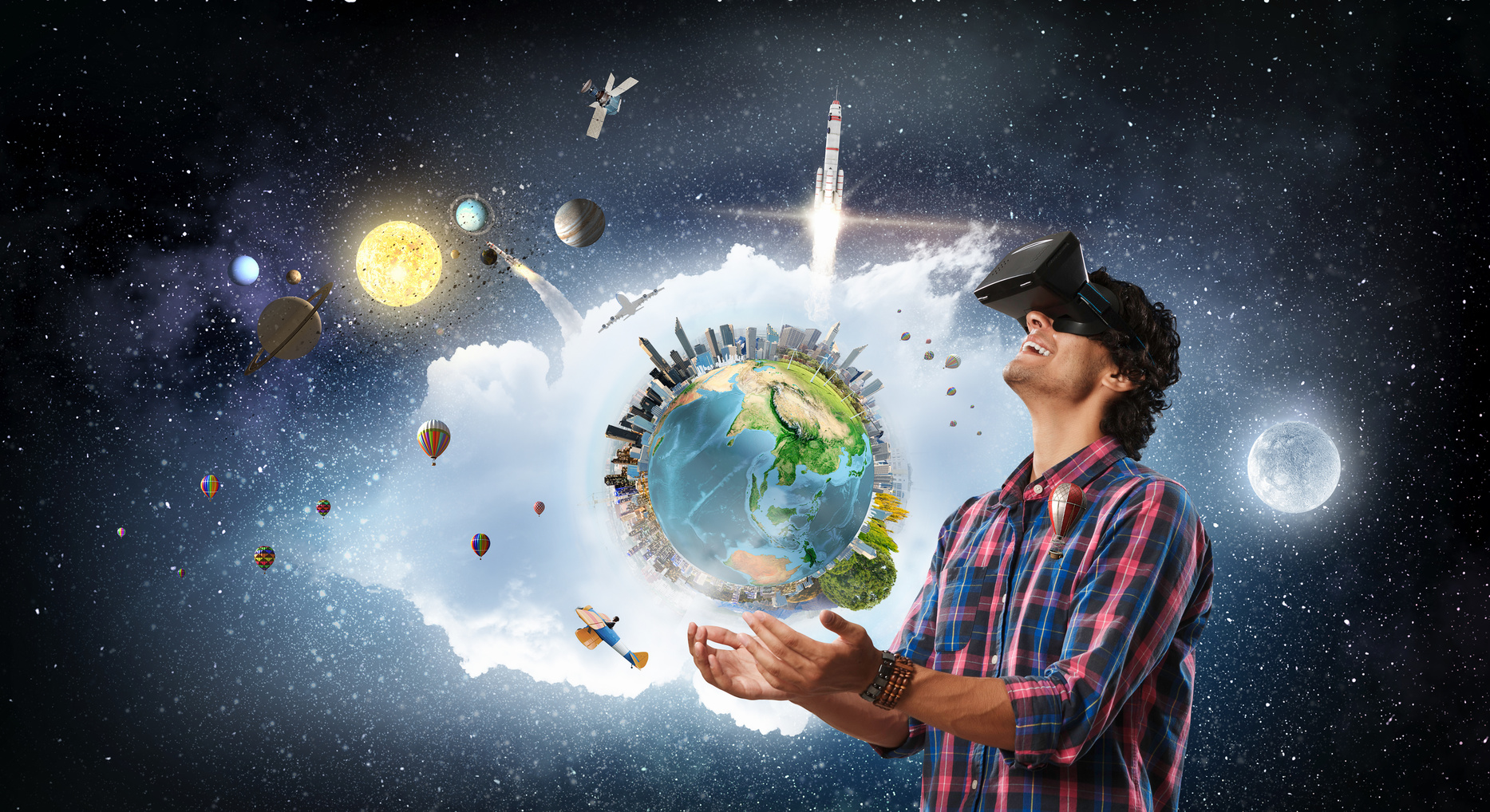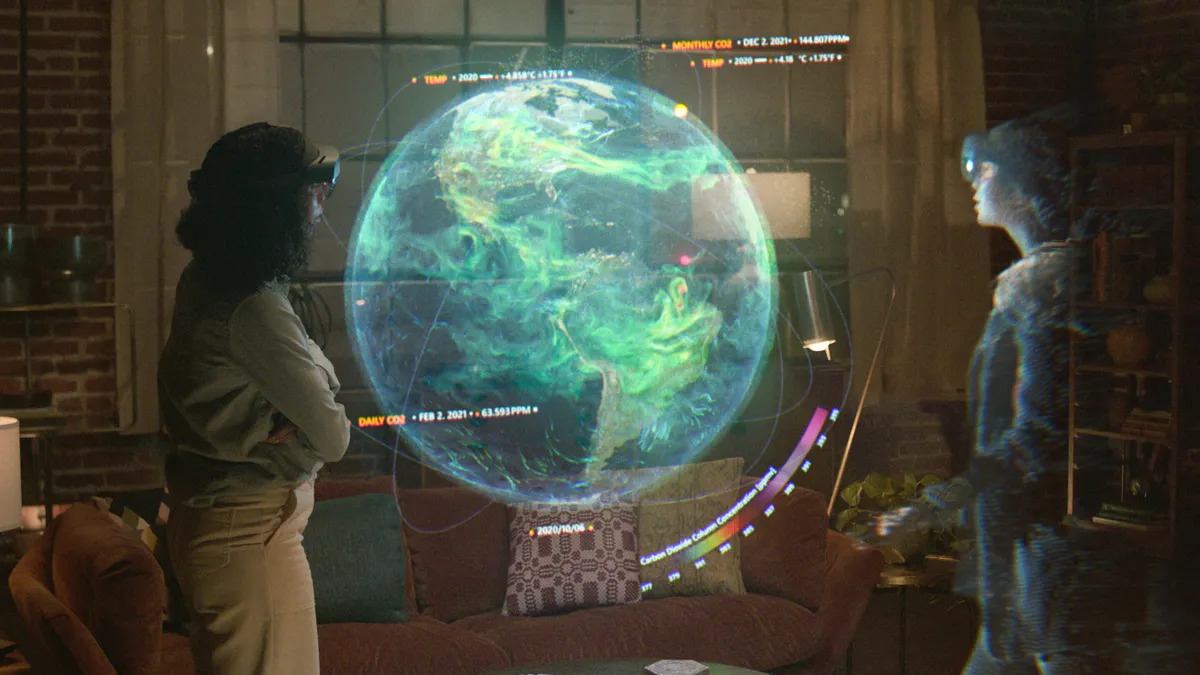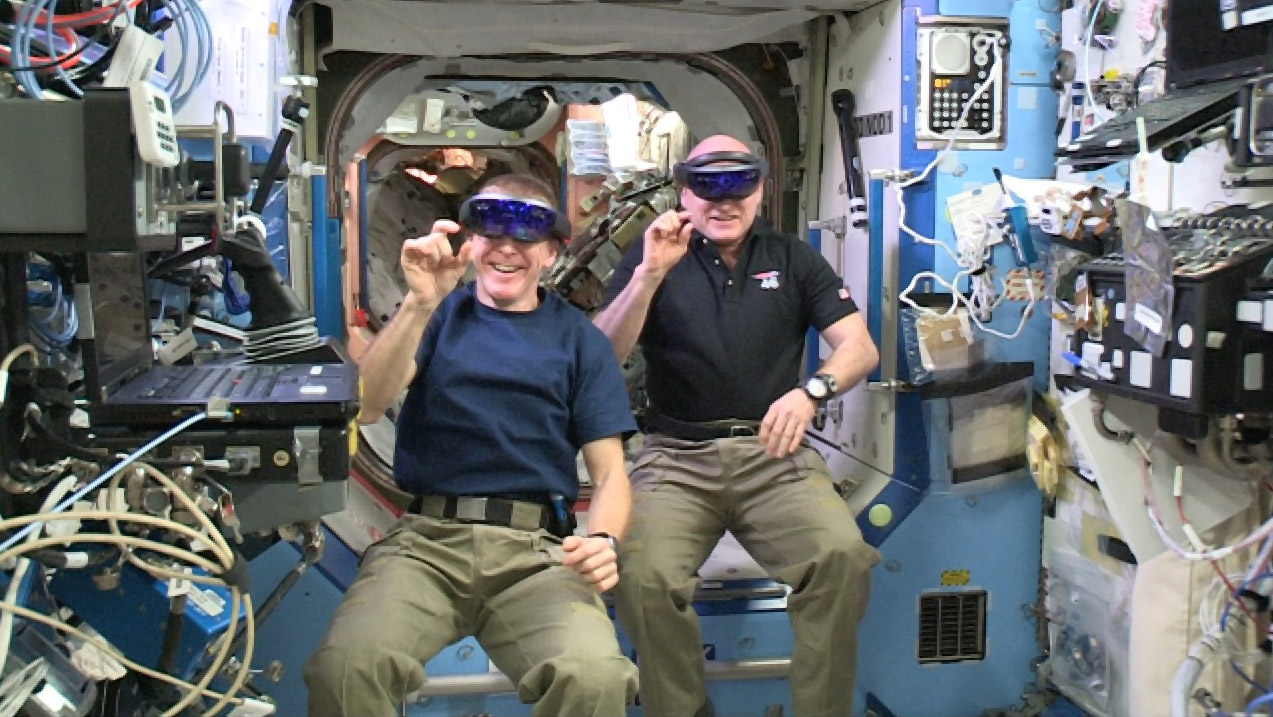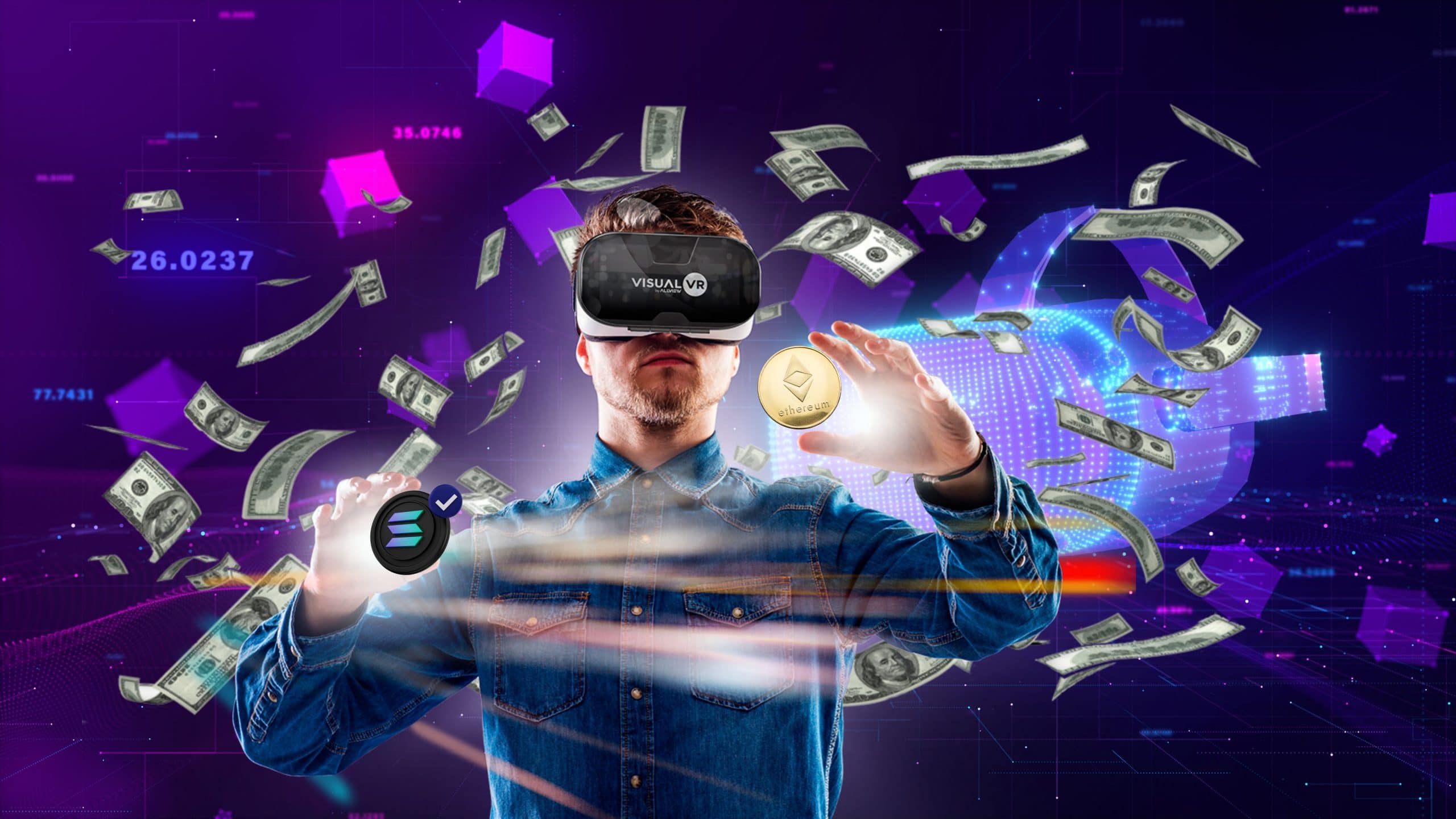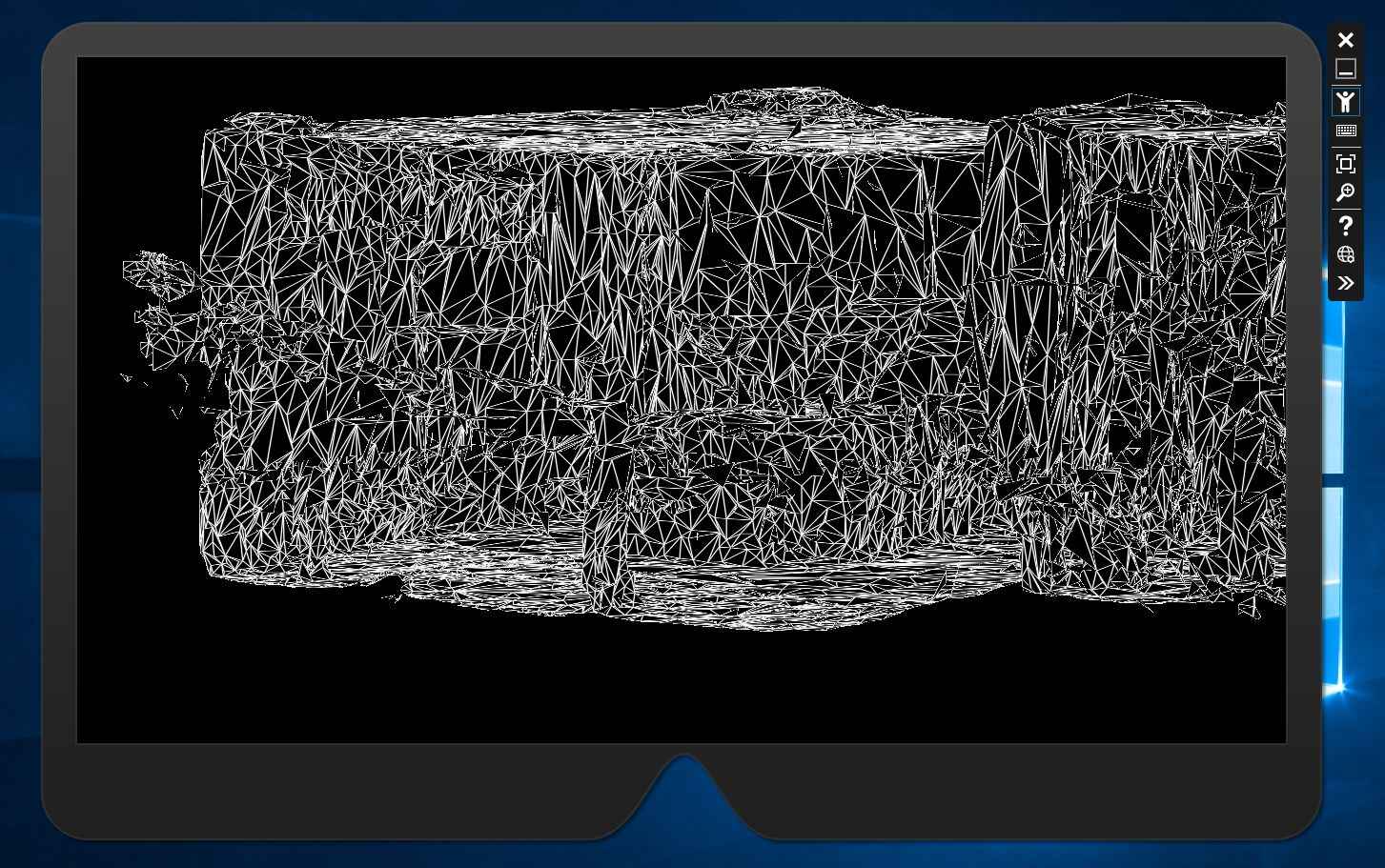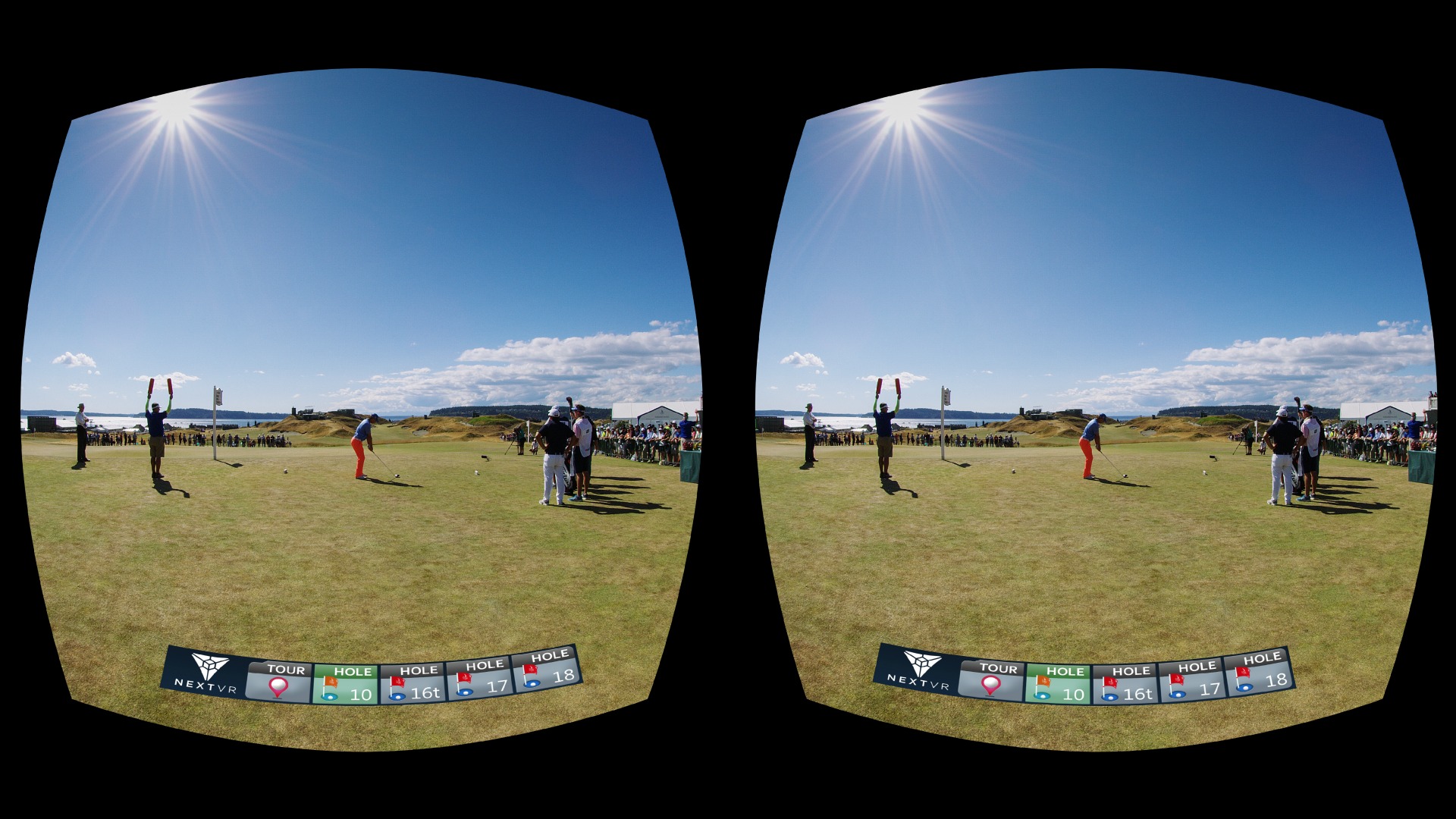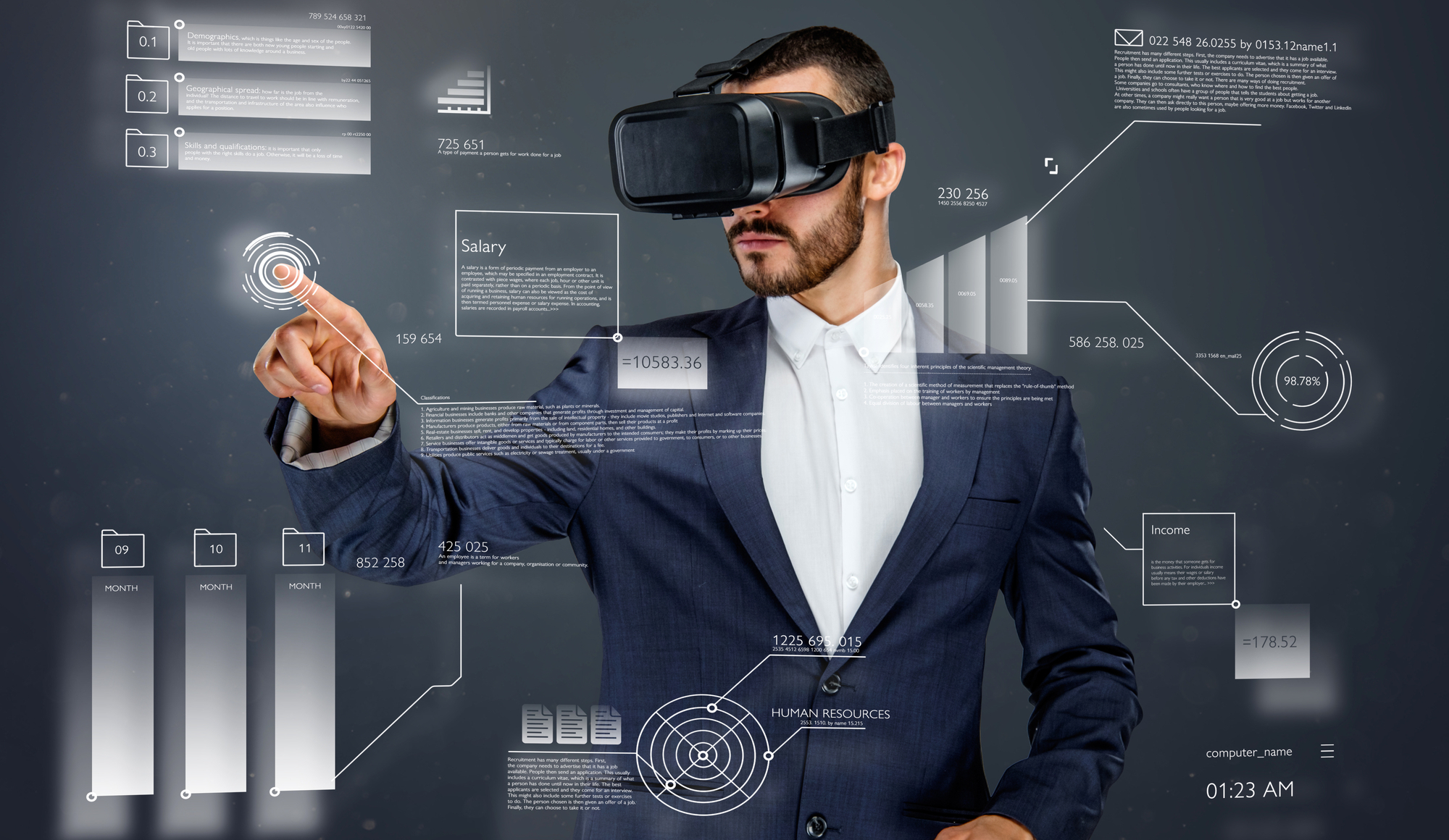Introduction
Virtual Reality (VR) is an emerging technology that has gained significant traction in recent years. It has the potential to transform various industries, from entertainment to healthcare, education to architecture, and even business to sports. With its immersive and interactive capabilities, VR has the power to transport users to virtual worlds and create experiences that were previously unimaginable. As this technology continues to advance and become more accessible, it is poised to change the world in profound ways.
One of the key aspects of VR is its ability to provide users with a sense of presence, where they feel as if they are physically present in the virtual environment. This is achieved through the use of specialized headsets or goggles that track the user’s movements and respond accordingly, creating a fully immersive experience. Additionally, VR can incorporate other sensory inputs such as touch and sound to further enhance the realism of the virtual world.
While VR initially gained popularity in the gaming industry, its applications have expanded far beyond entertainment. Today, VR is being utilized in fields such as education, healthcare, architecture, training, travel, communication, and marketing, among others. The potential of VR in these industries is vast, offering new opportunities for learning, innovation, and engagement.
However, along with the exciting possibilities, there are also potential challenges and ethical considerations that arise with the widespread adoption of VR. These include issues related to privacy, safety, addiction, and the blurring of the line between what is real and what is virtual. It is essential to address these concerns as VR continues to evolve, to ensure its responsible and ethical use.
In this article, we will delve into the various ways that virtual reality is set to change the world. From its impact on entertainment and education to healthcare and architecture, we will explore the transformative potential of VR in different sectors. Additionally, we will discuss the challenges and ethical considerations that need to be addressed as this technology becomes more prevalent.
Virtual Reality in Entertainment
The entertainment industry has been revolutionized by virtual reality, providing users with immersive and interactive experiences like never before. VR gaming allows players to enter virtual worlds, where they can interact with environments, characters, and objects in ways that were previously unimaginable. This has led to a whole new level of engagement and immersion, making gaming a truly transformative experience.
Furthermore, virtual reality has also transformed the way we consume media. With VR headsets, users can watch movies and documentaries in a virtual theater, providing a more immersive and cinematic experience. This technology allows viewers to feel as if they are sitting in a movie theater, complete with a large screen and surround sound, all from the comfort of their own homes. Live events such as concerts and sports games can also be enjoyed in VR, giving users a front-row seat experience regardless of their physical location.
Virtual reality has also paved the way for new forms of storytelling and content creation. VR experiences and narratives can be created to transport users to different worlds, allowing them to explore and interact with the story in a way that traditional media cannot replicate. From immersive storytelling experiences to virtual art galleries, the possibilities for creative expression in VR are endless.
Aside from gaming and media consumption, virtual reality is also making its mark in theme parks and attractions. VR rides and experiences provide visitors with thrilling and immersive adventures, enhancing the overall entertainment value of these venues. Users can experience extreme sports, adrenaline-pumping activities, and even travel to fantastical worlds, all within the confines of a theme park.
With its ability to transport users to different realities and create truly immersive experiences, virtual reality is transforming the entertainment industry. From gaming and media consumption to storytelling and theme parks, VR has opened up new dimensions of entertainment that were previously only limited to our imagination.
Virtual Reality in Education
Virtual reality has the potential to revolutionize education by creating immersive and interactive learning experiences. Traditional education methods often rely on textbooks and lectures, which can be passive and lack engagement for students. However, with virtual reality, students can actively participate in their learning and explore subjects in a whole new way.
One of the key benefits of VR in education is its ability to bring learning to life. Students can be transported to historical events, scientific experiments, and even distant countries, providing a level of realism and experiential learning that textbooks cannot replicate. For example, instead of reading about ancient civilizations, students can walk through virtual ancient ruins, interact with historical figures, and gain a deeper understanding of the subject matter.
Furthermore, virtual reality enables students to learn at their own pace and in their preferred learning style. VR simulations can be customized to cater to individual needs, allowing students to explore concepts and practice skills in a safe and controlled environment. This personalized approach to learning can enhance comprehension and retention, as students are actively engaged and motivated to learn.
In addition to traditional subjects, VR can also offer specialized training and simulations in various fields. Medical students can use VR to practice surgical procedures, while engineering students can engage in virtual experiments and simulations. This hands-on approach to learning fosters critical thinking and problem-solving skills, preparing students for real-world challenges.
Virtual reality also has the potential to make education accessible to those who face physical or geographical limitations. Students in remote areas can have access to high-quality education through VR, bridging the gap between resources and opportunities. Additionally, VR can support students with special needs by providing tailored learning experiences that cater to their unique requirements.
While VR in education presents exciting opportunities, it is crucial to address the challenges and ensure its effective integration into classrooms. This includes issues such as affordability of VR equipment, training for educators, and the development of suitable content. However, with advancements in technology and increased availability, virtual reality has the potential to transform education and make learning more engaging, immersive, and accessible for students of all ages.
Virtual Reality in Healthcare
Virtual reality is making significant advancements in the healthcare industry, transforming the way medical professionals diagnose, treat, and educate patients. With its immersive capabilities, VR has the potential to enhance medical procedures, improve patient outcomes, and provide innovative training opportunities for healthcare providers.
One area where virtual reality is making a significant impact is in pain management and distraction therapy. VR simulations can help distract patients from painful procedures by immersing them in calming and engaging virtual environments. This has been particularly beneficial in pediatric care, where VR can minimize anxiety and discomfort during medical interventions.
Virtual reality is also being utilized for surgical planning and training. Surgeons can use VR simulations to practice complex procedures, visualize anatomical structures, and improve surgical precision. Additionally, VR can provide a platform for collaborative surgeries, allowing experts from different locations to virtually assist in real-time.
Moreover, VR is being used for rehabilitation purposes. Patients with physical disabilities or undergoing recovery from injuries can engage in virtual rehabilitation exercises that can stimulate movement, improve coordination, and enhance motor skills. This interactive approach to rehabilitation can accelerate the recovery process and improve patient satisfaction.
Another area where VR is making a significant impact is in mental healthcare. Virtual reality can simulate realistic environments and scenarios to help individuals facing psychological or emotional disorders. VR exposure therapy is being used to treat phobias, PTSD, and anxiety disorders, allowing patients to confront and overcome their fears in a controlled and safe environment.
Furthermore, virtual reality can be used for medical education and training. Medical students and professionals can practice procedures, simulate patient scenarios, and enhance their skills in a realistic virtual environment. This immersive training method can improve knowledge retention, develop critical decision-making abilities, and bridge the gap between theoretical learning and practical application.
While the adoption of virtual reality in healthcare is on the rise, challenges such as cost, access, and data privacy need to be addressed. However, the potential of VR to revolutionize healthcare by improving patient care, enhancing medical training, and transforming rehabilitation methods is significant. Virtual reality has the power to reshape the future of healthcare and provide innovative solutions to medical challenges.
Virtual Reality in Architecture and Design
Virtual reality is revolutionizing the architecture and design industries, providing architects, designers, and clients with immersive and realistic experiences before construction even begins. With VR, architectural concepts can be brought to life, allowing stakeholders to visualize spaces, assess design choices, and make informed decisions.
One of the key benefits of virtual reality in architecture is the ability to create virtual walkthroughs. Architects can develop 3D models of buildings and spaces and allow clients to explore them in a virtual environment. This enables clients to experience the scale, proportion, and spatial relationships within the design, helping them envision the final outcome more accurately.
Furthermore, VR can simulate lighting conditions, materials, and textures, providing a realistic representation of the proposed design. It allows architects to test different design elements and make adjustments based on real-time feedback, resulting in more efficient and successful design iterations.
Virtual reality also enables collaboration and communication among project teams. Architects, engineers, and clients can meet virtually within the 3D virtual environment, making it easier to discuss design decisions, provide feedback, and address any concerns. This streamlined communication improves project coordination and reduces misunderstandings.
In addition, virtual reality can transform the construction process by enhancing project planning and coordination. Construction site inspections can be conducted virtually, allowing project managers to identify potential issues and resolve them before construction begins. This reduces costly errors, enhances safety, and improves overall project efficiency.
Moreover, VR can revolutionize interior design by allowing clients to virtually customize and visualize different design options. From furniture placement to color schemes, clients can make informed choices and ensure the design aligns with their preferences and vision.
While virtual reality in architecture and design presents exciting possibilities, it is crucial to ensure accessibility and user-friendliness. The technology should be widely available and easy to use for architects, designers, and clients. However, as VR continues to advance and become more accessible, it has the potential to transform the industry by improving design visualization, enhancing collaboration, and streamlining the construction process.
Virtual Reality in Training and Simulation
Virtual reality is revolutionizing training and simulation, providing a safe, immersive, and realistic environment for individuals to learn and practice various skills. From military and emergency response training to corporate and industrial simulations, VR is transforming the way training is conducted across different sectors.
One of the key advantages of virtual reality in training is its ability to recreate real-world scenarios. Users can experience realistic situations without the associated risks or costs. For example, military personnel can practice combat scenarios, medical professionals can simulate complex surgeries, and pilots can train in simulated flight environments. This immersive training improves decision-making, response times, and overall performance.
In addition, virtual reality allows for repetitive practice. Users can repeat tasks and scenarios as many times as necessary without the constraints of time, resources, or potential safety risks. This iterative approach to training enhances learning and skill development, ensuring individuals are proficient and confident in their abilities.
Furthermore, VR enables collaborative training experiences. Multiple users in different locations can participate in the same virtual environment, allowing for teamwork, communication, and coordination. This is particularly beneficial for industries such as disaster response and complex team-based tasks.
Virtual reality also has the potential to revolutionize soft skills training. Communication, leadership, and interpersonal skills can be honed in virtual environments where users can practice realistic social interactions. This is especially valuable for industries such as sales, customer service, and public speaking.
Moreover, VR can be used for onboarding and orientation purposes. New employees can be familiarized with their work environment, equipment, and procedures through immersive simulations. This accelerates the onboarding process and reduces the learning curve for new hires.
While virtual reality training offers immense potential, there are challenges to consider, such as the cost of equipment, content development, and integration with existing training programs. However, VR has the ability to revolutionize training by creating realistic, immersive, and effective learning experiences across a range of industries.
Virtual Reality in Travel and Tourism
Virtual reality is transforming the travel and tourism industry by providing immersive experiences that allow users to virtually explore destinations and attractions. With VR, travelers can go beyond traditional brochures and photos and step into a virtual world where they can experience different locations and cultures.
One of the key benefits of virtual reality in travel is the ability to virtually visit destinations before planning a trip. Users can explore iconic landmarks, walk through historic sites, and experience local attractions as if they were there in person. This helps travelers make informed decisions and choose destinations that align with their preferences and interests.
Furthermore, VR can enhance the booking process by allowing travelers to experience accommodations and venues before making reservations. Users can virtually tour hotel rooms, check out amenities, and explore event spaces, providing a more immersive and realistic preview of their travel experience.
Virtual reality is also being utilized to provide unique and interactive travel experiences. Users can participate in virtual tours led by local guides, offering a more in-depth and immersive understanding of different cultures and customs. VR can transport users to remote and inaccessible destinations, providing opportunities for exploration and discovery.
Moreover, virtual reality can play a significant role in tourism marketing by showcasing destinations and attractions in an engaging and captivating way. Travel companies and tourism boards can create VR experiences that generate excitement and inspire potential travelers to visit a destination. This immersive marketing approach can help increase tourism and drive revenue for local economies.
In addition, VR can be used as a tool for training and education within the travel and hospitality industry. Employees can undergo virtual training experiences to improve customer service skills, learn about cultural sensitivities, or practice emergency procedures. This enhances the overall hospitality experience for travelers.
While virtual reality is transforming the travel industry, it is essential to provide access and availability for a wide range of users. This includes making VR experiences accessible through various devices and platforms. As virtual reality technology continues to advance and become more accessible, it has the potential to revolutionize the way we explore, plan, and experience travel.
Virtual Reality in Social Media and Communication
Virtual reality is reshaping social media and communication by creating immersive and interactive experiences that go beyond traditional forms of digital engagement. With VR, users can connect, communicate, and share experiences with others in a more immersive and engaging way.
One of the key benefits of virtual reality in social media is the ability to create a sense of presence. Users can feel as if they are physically together in a virtual environment, even if they are geographically apart. This enhances social interactions and makes online communication more personal and immersive.
Virtual reality also allows for unique and shared experiences. Users can participate in virtual events, watch live performances, and explore virtual worlds together. This fosters a sense of community and belonging, as individuals can connect with like-minded people and share common interests in virtual spaces.
Furthermore, VR enables immersive storytelling and content creation. Users can create and share their own virtual experiences, allowing others to step into their world and engage with their content in a more interactive way. This opens up new possibilities for artistic expression, creative storytelling, and collaborative content creation.
In addition, virtual reality in social media enhances the visual communication experience. Users can share 360-degree photos and videos, providing a more immersive and panoramic perspective. This allows others to virtually explore destinations, events, and experiences in a more dynamic and engaging way.
Moreover, virtual reality can transform remote communication. Users can have virtual meetings, conferences, and collaborations in a more immersive and lifelike environment. This eliminates the limitations of traditional video conferencing, allowing for more effective communication and collaboration among remote teams or individuals.
While virtual reality has great potential in social media and communication, there are challenges to consider, such as the accessibility of VR devices and the need for content moderation and privacy protection. However, as virtual reality technology advances and becomes more accessible, it has the potential to revolutionize the way we connect, communicate, and share experiences in the digital realm.
Virtual Reality in Business and Marketing
Virtual reality is transforming the business and marketing landscape by providing innovative and immersive experiences that engage customers and drive brand awareness. With VR, businesses can create interactive and memorable experiences that go beyond traditional marketing techniques.
One of the key advantages of virtual reality in business and marketing is its ability to create immersive product demonstrations and simulations. Instead of static images or videos, customers can virtually experience products or services in a more interactive and engaging way. This helps businesses showcase their offerings in a unique and impactful manner, leading to increased interest and potential conversions.
Furthermore, virtual reality can transport customers to different settings or environments. Businesses can create virtual showrooms, allowing customers to virtually browse through products and visualize how they would fit in their own space. This immersive approach to shopping enhances customer engagement and helps them make informed purchasing decisions.
In addition, VR can be used in experiential marketing campaigns. Brands can create virtual experiences that immerse customers in the brand story or take them on virtual adventures related to the product or service. This creates memorable experiences that generate brand loyalty and word-of-mouth marketing.
Virtual reality is also revolutionizing the real estate industry. Customers can virtually tour properties and explore different options without physically visiting each location. This saves time and resources for both customers and real estate agents, allowing for more efficient decision-making and a more immersive home-buying experience.
Moreover, virtual reality can enhance training and collaboration within businesses. Employees can participate in virtual training programs, workshops, or team-building activities in a more interactive and engaging way. VR can simulate real-life scenarios and provide a safe environment for employees to practice skills and improve performance.
A key consideration in utilizing virtual reality in business and marketing is ensuring accessibility for users. This includes providing VR experiences through various devices, platforms, and locations. As VR technology becomes more accessible and cost-effective, it has the potential to revolutionize the way businesses market their products or services and engage with customers in a more immersive and impactful manner.
Virtual Reality in Sports and Gaming
Virtual reality has had a transformative impact on the sports and gaming industries, offering immersive experiences that enhance both spectatorship and gameplay. With VR, fans can feel as though they are part of the action, while gamers can delve into virtual worlds and experience gameplay like never before.
In the realm of sports, virtual reality has revolutionized the fan experience. VR technology allows fans to watch games, matches, and events from different perspectives, as if they were sitting in the stadium or on the field. This enhances the sense of immersion, excitement, and engagement, giving fans a front-row seat experience from the comfort of their homes.
Furthermore, virtual reality is opening up new opportunities for training and performance analysis in sports. Athletes can utilize VR simulations to practice and refine their skills, experience game scenarios, and improve decision-making abilities. Coaches can use VR technology to analyze player performance, strategize, and develop effective training programs. This has the potential to enhance athletic performance and level of play across various sports.
Virtual reality is also transforming the gaming industry. Gamers can immerse themselves in virtual worlds and have more interactive experiences through VR gaming. The ability to move within the virtual environment and interact with objects and characters in a more natural way brings an unprecedented level of realism and interactivity to gaming.
Moreover, virtual reality has the potential to enhance social interaction and multiplayer experiences in gaming. Users can connect with friends or other players in a virtual environment, where they can communicate, collaborate, and compete together. This takes multiplayer gaming to a whole new level, allowing for more immersive and engaging experiences.
In addition, VR is being utilized in esports, where professional gamers compete in virtual environments. Virtual reality allows spectators to watch esports events as if they are in the game world themselves, providing a more immersive and thrilling viewing experience. This has contributed to the rapid growth and popularity of esports as a spectator sport.
While virtual reality offers exciting possibilities in sports and gaming, challenges such as affordability of VR equipment and development of suitable content need to be addressed. However, as VR technology continues to advance and become more accessible, it has the potential to redefine the way we experience sports and gaming, making them more immersive, interactive, and engaging than ever before.
Potential Challenges and Ethical Considerations
While virtual reality brings forth numerous benefits and opportunities, it is important to acknowledge the potential challenges and ethical considerations that arise with its widespread adoption. Understanding and addressing these issues is crucial to ensure responsible and ethical use of virtual reality technology.
One of the primary challenges is the accessibility and affordability of virtual reality equipment. Although the cost of VR devices has been decreasing, it still remains a financial barrier for many individuals and organizations. Ensuring that VR technology becomes more accessible and affordable for a wider audience is essential to promote its inclusive use.
Privacy concerns are another significant consideration. VR devices often collect personal data, including users’ movements, audio, and visual information. It is vital for developers and manufacturers to prioritize data security and encryption to protect users’ privacy. Implementing clear privacy policies and providing users with control over their personal data is imperative in establishing trust and confidence in virtual reality technology.
Health and safety considerations also arise in the use of virtual reality. Prolonged exposure to VR environments can sometimes lead to motion sickness, discomfort, or eye strain. Developers need to prioritize user comfort and ensure that VR experiences are designed with proper ergonomic guidelines. Educating users on recommended usage durations and providing options for adjusting settings can mitigate potential health risks.
Another ethical consideration is the potential psychological impact of virtual reality. Immersive experiences in VR can blur the line between reality and the virtual world, potentially leading to dissociation or confusion. It is crucial to provide clear indications of what is real and what is virtual, especially in situations where users may be vulnerable, such as therapeutic or educational contexts.
Furthermore, ethical content creation and responsible use of virtual reality are essential. Developers and content creators need to consider issues related to inclusivity, representation, and cultural sensitivity in the virtual experiences they develop. Avoiding the perpetuation of stereotypes, discrimination, or harmful content is paramount in ensuring a positive and inclusive VR environment.
Lastly, addiction is a concern that arises with prolonged and excessive use of virtual reality. The immersive nature of VR experiences can draw users into a highly engaging and addictive virtual environment. Developers and users should be aware of the potential addictive nature of virtual reality and encourage responsible and healthy usage habits.
Addressing these challenges and ethical considerations requires collaboration between developers, manufacturers, policymakers, and users. By ensuring accessibility, privacy protection, user comfort, psychological well-being, ethical content creation, and responsible usage, we can harness the full potential of virtual reality while ensuring the safety, well-being, and inclusivity of all users.
Conclusion
Virtual reality is a rapidly evolving technology that is poised to change the world across various industries. From entertainment and education to healthcare and business, the potential of VR is vast and transformative.
In entertainment, virtual reality has revolutionized gaming, media consumption, and theme park experiences, providing immersive and interactive entertainment like never before. In education, VR is reshaping the way we learn by creating immersive and experiential educational experiences that engage students and enhance understanding.
Virtual reality is also making significant strides in healthcare, offering innovative solutions in pain management, surgical training, rehabilitation, and mental health therapy. In architecture and design, VR is transforming the way we visualize and experience spaces, making it easier for architects, designers, and clients to communicate and make informed decisions.
Training and simulation are enhanced through virtual reality, allowing for immersive and realistic practice, collaboration, and skill development. In travel and tourism, VR is providing virtual exploration and previewing experiences, transforming how people plan and enjoy their travel adventures.
Virtual reality is also revolutionizing social media, communication, and marketing, making interactions more immersive and engaging. In sports and gaming, VR is elevating fan experiences and gameplay, bringing a new level of immersion, realism, and interactivity.
While virtual reality presents immense opportunities, it is essential to address challenges and ethical considerations such as accessibility, privacy, health, content creation, and responsible use. By proactively considering these factors, we can ensure the responsible adoption and ethical usage of virtual reality technology.
As virtual reality technology continues to advance and become more accessible, it will undoubtedly reshape industries, revolutionize experiences, and offer new avenues for creativity and innovation. The potential of virtual reality is vast, and as we navigate the future, it is crucial to embrace the power of this technology while prioritizing considerations of accessibility, privacy, ethics, and user well-being.







